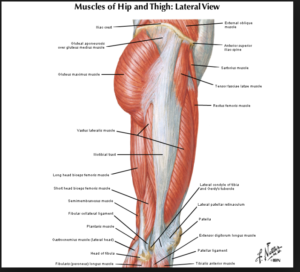Sometimes it’s hard to remember all the muscles, bones and joints. Even if as yoga teachers, we hone in on learning just the muscles, that can be daunting too. We know alignment and action words, but it’s really important to understand muscles, their action and generally where they are. I don’t harp on teachers in my trainings to remember every single origin and insertion point however it IS important to know where the muscle is, generally the origin and insertion and what it does primarily ( extra credit if you know other functions it has too!)
Usually when yoga teachers learn anatomy, they learn the muscles one by one, if at all ( I know many teachers have said learning about the muscles was not really part of their training!). This can be hard because it means we’re learning the information in the absence of a meaningful framework so we often forget the details.
One way to learn muscles is to learn them in terms of the muscles that work together and also the muscles that do opposing things. This is part of learning the relationship between muscles. In the case of muscles that do the same function, those muscles are called a “force couple” because they work together to exert force on a limb to move it in some way. Another term often used is “synergists” because they work in “synergy” to create the movement.
Learning muscles in this format can be helpful for yoga teachers because it makes a little more sense and provides a context for what you’re learning. Also, you can easily start to see how the movement the pair creates applies to certain poses so know you’re also learning the muscles in poses as well.
I’ll just share two examples to give you an idea. First, let’s look at hip extension as we have in Upward Dog pose here:

In this pose, we have two muscles that work together to create hip extension ( there are more but these are two)
Gluteus maximus and the Hamstrings complex:

Another force couple that work to FLEX the hip are the Psoas and the Rectus femoris, part of the Quadriceps:


You can see that because both Rectus femoris and Psoas are on the FRONT of the body, they are going to FLEX the hip, while Gluteus maximus and Hamstrings are on the BACK on the body and therefore are going to EXTEND it.
So, as you head into your learning of anatomy, see if learning muscles in this way is helpful.
I’ve got an anatomy manual that can help you learn anatomy by showing you the muscles and the muscles in poses. It has a lot more content too and is a great learning tool. You can order it here:
The Bare Bones Yoga Guide to AnatomyÂ
I’ll add in a free 1/2 anatomy consult with any order too! In my anatomy consults, I set them up via Zoom and we chat about questions you have on anatomy. It’s a great way to get some one on one attention!
Once you order it, just message me here and let’s set it up:
Email Karen to set up your FREE 1/2 hour consult
Thanks for reading and leave a comment below!
